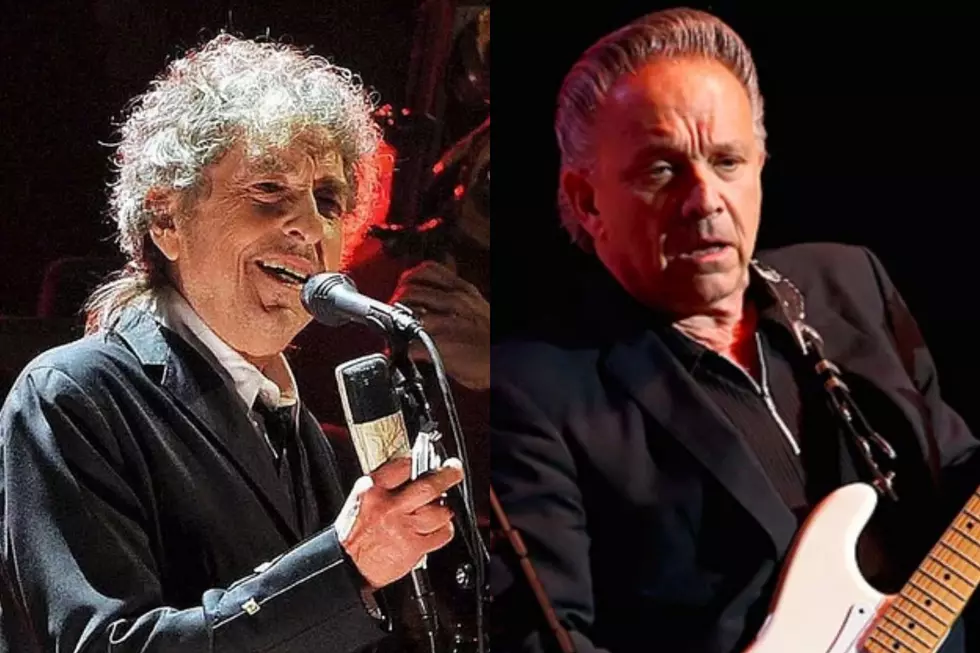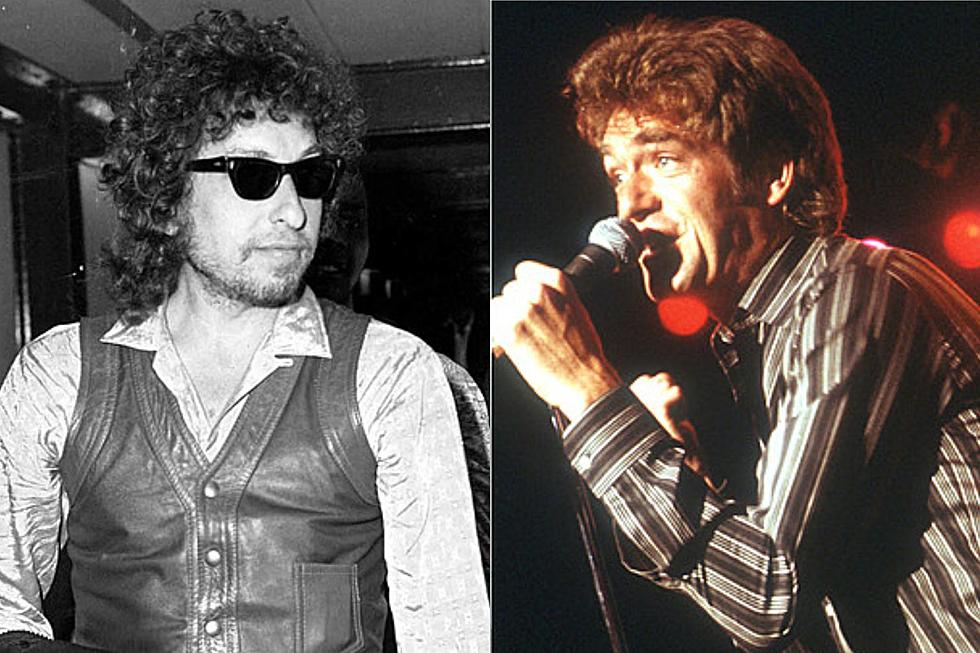
When Bob Dylan Went Country on ‘Nashville Skyline’
Having hinted as his intentions on the more rustic John Wesley Harding in late 1967, Bob Dylan dove head-long into deep country for 1969's Nashville Skyline – a striking retrenchment for the fiery protest singer just as the '60s were taking an ugly turn.
Released on April 9, 1969, the album found Dylan in a quiet place, after his own turbulent experiment with electrifying folk music. He had taken an opportunity after a motorcycle accident to reconnect with family life, and his music had become more personal. "The songs reflect more of the inner me than the songs of the past," Dylan told Newsweek at the time.
As such, a series of shocking assassinations, riots in American streets and an escalation in the Vietnam War would be met by some of the most bucolic work of Dylan's career. The cover of the album finds him looking almost deliriously content. Critics like Clinton Heylin, in Behind the Shades, bitterly questioned this turn of events. But fans, perhaps shell-shocked themselves over the way the decade had turned, pushed the charming, determinedly happy Nashville Skyline to No. 3 in the U.S. and to the top of the charts in the U.K.
"The beauty of the album is that it is totally undemanding," critic Robert Christgau argued in the Village Voice. Paul Nelson, writing in 1969 for Rolling Stone, called the album "a reminder that Dylan has always been capable of tenderness."
Dylan didn't go half-way in this quest for backwoods authenticity, using respected Nashville sessions musicians, switching to a more confidential tone of voice, recording a duet update of "Girl From the North Country" with no less a country figure than Johnny Cash – and even making a promotional stop on Cash's variety show.
Listen to Bob Dylan's 'Lay Lady Lay'
"If Dylan was concerned about retaining a hold on the rock constituency," Heylin countered, "making albums with Johnny Cash in Nashville was tantamount to abdication in many eyes."
Still, in its way Nashville Skyline was revolutionary – if on a much smaller scale. By exploring country music in a completely non-ironic way, Dylan had shattered a counterculture hipster archetype.
"Country music was despised, hick music when Dylan took it up," Michael Gray wrote in the Bob Dylan Encylopedia. "People were divided into the hip and the non-hip." Nashville Skyline ultimately helped kick open the door for the looming Americana movement to follow.
Not that Dylan was ready to take up that mantle either. He had come to despise the idea of being a spokesman for his – or any other – generation. "Not only did I not want it, but I didn’t need it," Dylan told the Sunday Telegraph's John Preston in 2004. "I couldn’t understand it either. None of us like to be defined by what other people think of us. I wasn’t the toastmaster of any generation and that notion had to be pulled up by the roots."
Even as Dylan turned inward, however, Nashville Skyline spun off three charting songs, none of them bigger than "Lay Lady Lay," which matched Dylan's second-best-ever showing on the Billboard chart at No. 7. He remained, at least for now, a powerful cultural force – whether he wanted to be, or not.
Christgau quotes one of that song's famous lines in framing the singer-songwriter's mindset at the time: "'Why wait any longer for the world to begin?' is a political cop-out, but it's a beautiful one – beautiful because it is true. Why wait, when it is possible to create within your own world and still anticipate that better one?"
Perhaps unsurprisingly, Dylan's follow-up album would be titled Self Portrait.
Bob Dylan Albums Ranked
More From Ultimate Classic Rock









